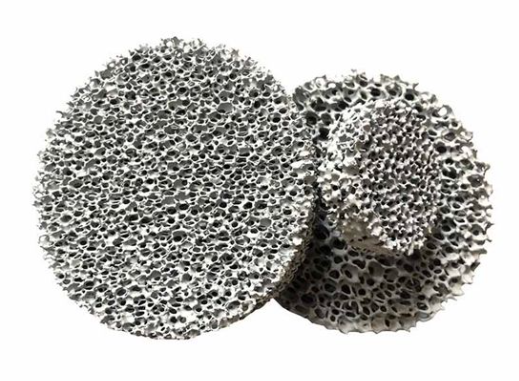Characteristics and Applications of Silicon Carbide Ceramic Foam
Ceramic foam resembles foam and is characterized by its porous structure. Common materials used in its preparation include ZrO2, Si3N4, Al2O3, and SiC. Among these, silicon carbide ceramic foam stands out as the most prevalent and promising inorganic high-temperature material. In this article, we will delve into the features and uses of silicon carbide ceramic foam.
Characteristics of Silicon Carbide Ceramic Foam
The inception of silicon carbide ceramic foam dates back to the 1970s. This novel inorganic non-metallic filter material boasts numerous pores within its internal structure, offering advantages such as lightweight construction, high strength, exceptional heat resistance, corrosion resistance, easy regeneration, prolonged lifespan, and effective filter adsorption properties.
Silicon carbide ceramic foam can be sintered and compacted at atmospheric pressure, eliminating the need for high pressure and inert atmospheres. This reduction in production requirements helps lower costs for enterprises.
Typically, incorporating appropriate sintering aids lowers the sintering temperature required for silicon carbide ceramic foam. This process, under normal pressure sintering, helps mitigate oxidation of SiC on the ceramic foam's surface and enhances its overall performance.
When used for liquid filtration, silicon ceramic foam exhibits resistance to corrosion from both acids and alkalis, ensuring that the filtered metal liquid remains uncontaminated. Furthermore, its ability to be reused without compromising filtration efficiency post-use significantly reduces costs for enterprises.
Silicon carbide ceramic foam also boasts excellent molding processing capabilities. It can be easily cut using diamond tools, and diamond wheels are suitable for grinding when necessary. By adjusting processing conditions, silicon carbide ceramic foam can be readily shaped into the desired form.
Applications of Silicon Carbide Ceramic Foam
1. Catalyst Carrier
Silicon carbide ceramic foam offers advantages such as higher porosity, thermal conductivity, mechanical strength, oxidation resistance, and corrosion resistance. Its uneven surface and numerous micropores create a unique network structure, greatly increasing the contact area between phases. These properties position silicon carbide ceramic foam as a next-generation catalyst carrier, replacing traditional materials like silica, alumina ceramics, and activated carbon.
2. Filters
With its low-pressure loss, heat resistance, thermal shock resistance, and high efficiency in collecting oil fumes, silicon carbide ceramic foam shows promise as a filter for diesel engine oil fume collectors.
3. Biomedical Applications
Silicon carbide ceramic foam materials demonstrate good biocompatibility and controllable pore sizes, making them suitable for repairing complex-shaped and load-bearing bone defects.
4. Sound Absorption Material
The unique network structure of silicon carbide foam ceramics enables them to be used for sound absorption and noise reduction purposes.
5. Chemical Industry Applications
In the chemical industry, silicon carbide ceramic foam can serve as foam structure packing or trays, as well as in steam generators, high-pressure adiabatic burners, and radiation burners. Its use significantly enhances heat transfer coefficients and strengthens combustion processes.
6. Other Applications
Silicon carbide ceramic foam finds utility in various other fields, including materials for the heat treatment of electronic components, fluidized bed bottom plates, humidifiers, water boilers, and microbial carriers.
Conclusion
Thank you for reading our article and we hope it can help you to have a better understanding of the characteristics and applications of silicon carbide ceramic foam. If you want to learn more about silicon carbide ceramic foam, we would like to advise you to contact us for more information.
- Previous: None
- Next: Should I use fiberglass tape for drywall repair?


